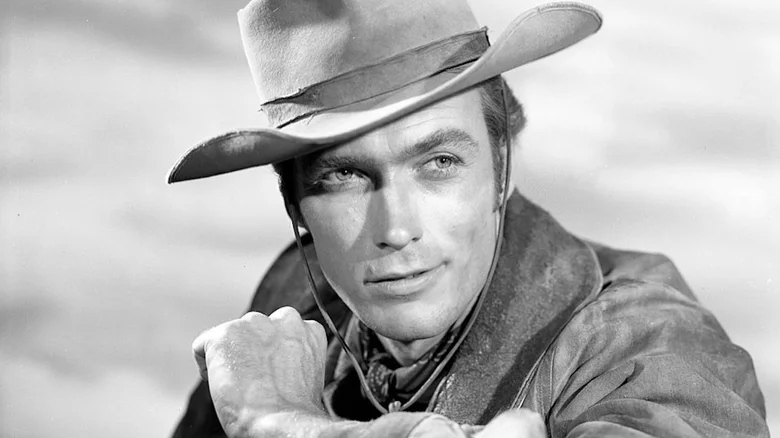I’ll extend my historical antennae to a piece of real estate and a story a few miles south of our Pacific Northwest borders — Carmel, California.
The history of Carmel, a sometimes sunny, oftentimes foggy hamlet, brims with wonderful tales: Spanish and Mexican influences, a haven for artists and writers, a fishing and golfing mecca, and the world of American artist, actor, auteur Clint Eastwood.
Last year my wife Joanne and I had dinner at Mission Ranch near Carmel’s foaming beach, owned and lovingly developed with historical reverence by Clint Eastwood and others. Several years ago, Eastwood bought Mission Ranch to save it from being subdivided and possibly overdeveloped by “outside” investors.
While stationed at nearby Fort Ord during the Korean War days (the same time that I was at Fort Ord before shipping overseas), Eastwood visited Mission Ranch and its friendly bar and restaurant. It then served as an informal officer’s club for the U.S. Army and U.S. Navy, although the general public had no difficulties gaining access to its good time atmosphere.
After buying a home in the neighborhood during his “Rawhide” TV days, Eastwood’s affection for Carmel took root. It was while he served the town as mayor that the historic Mission Ranch came on the market. It was only a step or two from there to investing in what Eastwood saw as Carmel’s living history.

The Mission Ranch property was purchased by John Martin and family in the 1850s for $300. Martin moved into two small adobe buildings which adjoined the Carmel Mission. His kitchen had been the mission tannery. After farming the lowlands and fishing the Carmel River, where salmon were once plentiful, Martin’s descendants sold it all to Willis J. Walker of nearby Pebble Beach, a wealthy lumberman and San Francisco socialite. Walker and wife employed Frank Lloyd Wright to design their house on Carmel Point. Walker also turned the ranch into a private club.
In 1937, the property became a night spot and later, an officer’s club. In 1986 Eastwood took possession of the deteriorating property and, while making his milestone film “Unforgiven,” began the careful job of remodeling. Eastwood was quoted as saying that he tried to “build a place that had a homey feel.” He also described Mission Ranch as an alternative to “stuccoed Holiday Inn hotel rooms.”
Mission Ranch has a guest house, patio, cottages, giant eucalyptus trees, and a casual restaurant that overlooks sheep in a field and the sand dunes guarding the Pacific Ocean. It is, in fact, the perfect setting for a Clint Eastwood western film.
Eastwood’s Monterey efforts are being supported by Carmel Heritage, a local history group, and the Voice of Carmel, an issue-oriented group that speaks to local affairs. Eastwood’s commercial venture is therefore suffused with sentiment, nostalgia, history, and good taste.
The “Eastwood Project” in Carmel, California offers a lesson or two for any Puget Sound community, surrounded by many similar coastal amenities. Turning nature and people into a partnership can work to the benefit of investors, residents, and visitors. Then throw in Mt. Rainier on the horizon.
Discover more from Post Alley
Subscribe to get the latest posts sent to your email.

Eastwood seems like a really good guy
While I haven’t had the pleasure of experiencing Mr. Eastwood’s labors, the story seems to have another angle, when local money with deep connections works closely with organizations to keep things…. just the way they are. As for Eastwood being a good guy, consider his disdainful treatment of Obama at the Republican convention, which he himself reportedly regrets. He is talented director but he is actually Dirty Harry.
When he addressed the empty chair and referred to it as “Mr. Obama”? How could I forget it? That was an extraordinary work of rudeness to a current president. Sure, he regrets it now, but it’s a little late to be sorry. Would he have tolerated anyone addressing Donald Trump that way? I think not. Also, Clint Eastwood may have preserved much of Carmel’s history, and he deserves a lot of credit for that. He was also arrogant when thwarted. By his own admission, he ran for mayor (and won) because he was furious at the city’s opposition to his plan to build office blocks on his property. I’m not sure he offers a lot of lessons to anyone who isn’t rich and white and pro development.
Very interesting, Junius. Thanks!
I was curious about what became of Walker’s house on Carmel Point, etc., and was surprised to learn that it was sold to a private developer for $22M last year. According to the Internet, it was originally commissioned by Delia Walker, Clinton Walker’s widow.
According to the Carmel Pine Cone, “The Mrs. Clinton Walker House sold to Monaco businessman Patrice Pastor, a major land owner in the city, who bought it from the descendants of Della Walker.”
This also (mentally) took me to Rosario Resort, which recently changed hands.